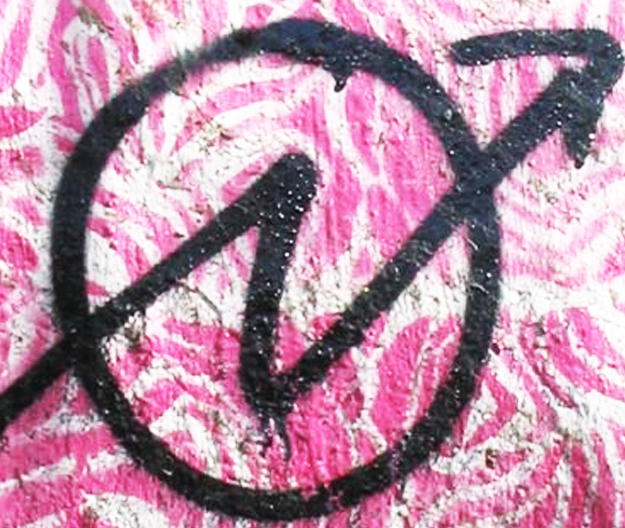In your daily life when you going to school, walking your dog, shopping at the market, or making your way home, do you ever take a moment to look at the walls, street lamps, and windows around you? Perhaps you have seen a sticker, poster, or brochure. You must have seen them. When people think of an application, movement, work as unfair or improper, they try to show that they are against them. We call these displays against injustice ‘protest’. It can be said that it is in the creation of humankind to disagree with what he doesn’t like. Did you know that you’ve come across these traces of protest and disagreement often in Bremen?
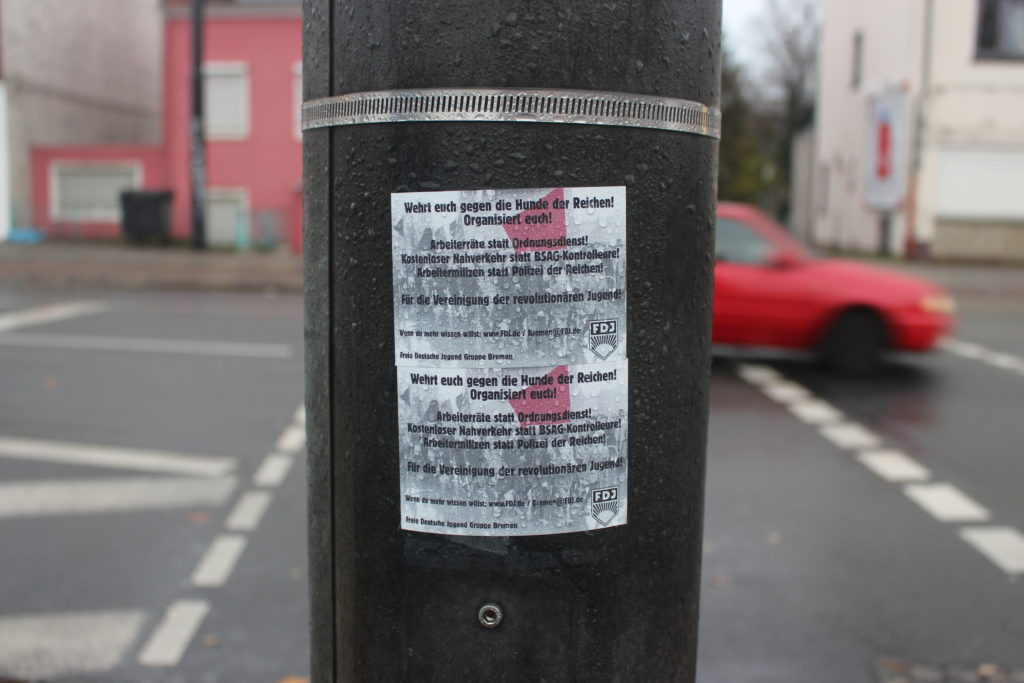
The Gröpelingen district of Bremen is a location where we can analyze these traces. The neighborhood has a cosmopolitan structure. Therefore, Turkish, Arab, Kurdish, German, Indian and many nations that we cannot account for make up the racial demographics of this area. As you walk on the streets, you can almost hear the voices of all people in this society. These voices are sometimes revealed as banners, stickers, or graffiti. You can see and experience the creation of this ambiance.
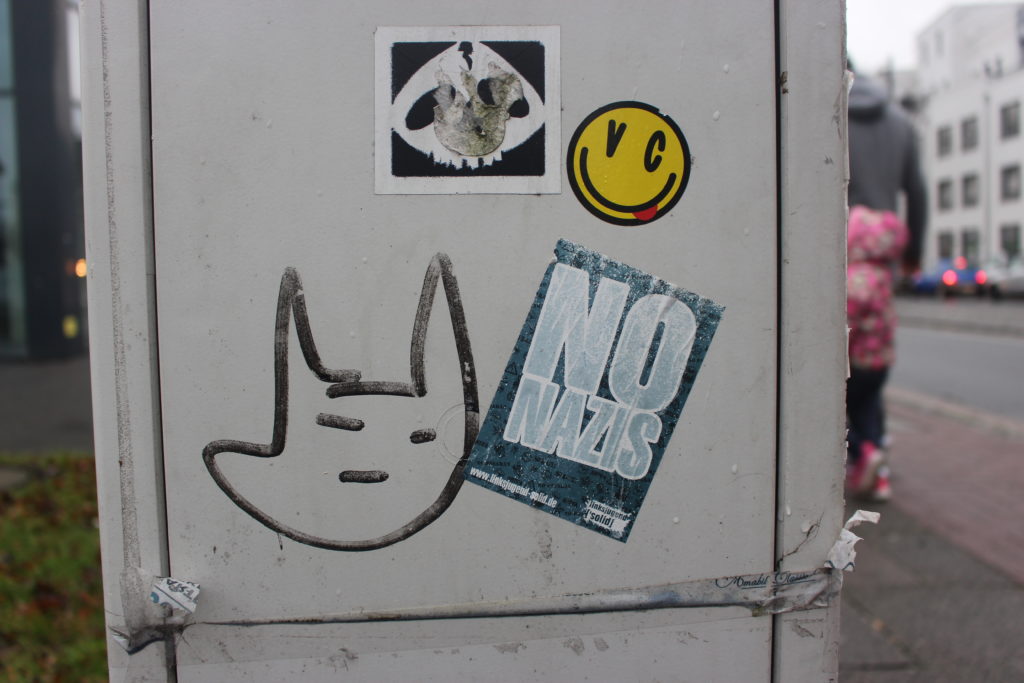
Considering that such a diverse population structure appeals to a wide range of movements, you can see the protest traces of multiple social and sociological areas. Those who are the voices of animals who cannot speak for themselves, those who speak for the rights of LGBTQ+ individuals who are excluded, those who criticize police violence, those who are opposed to fascism, those who embrace refugees, those who stand against imperialism and Neo-Nazis all cohabitate this space in protest. It will be difficult to mention any specific area. You can see a piece of some popular topics. Like the piece shown in the picture below.
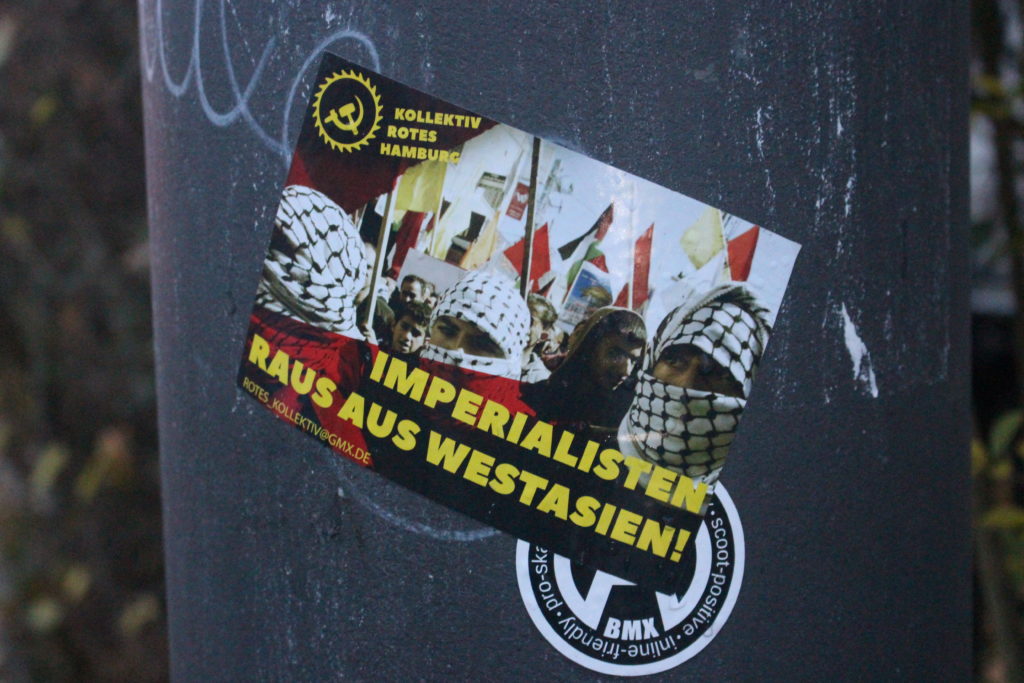
In Bremen, Gröpelingen is a prime example for how to use your voice in a free and passionate way. Although banners are usually in German, some of them have been printed and served in English, Turkish and Arabic, because protests generally try to combine different people and bring them to the movement. It makes many voices sound like one voice, embracing each individual. From the posters that appear, a “Queer feminismus” banner is one of the things that attracts our attention. Because there is a voice that rises against racism in more than one language. To be told, no matter which nation you are, whatever group you belong to, be a voice against racism! The organizer is a different community. You could see people covering a common subject from different areas, right? And did you see that cultural diversity could be part of the protests? On the street already.
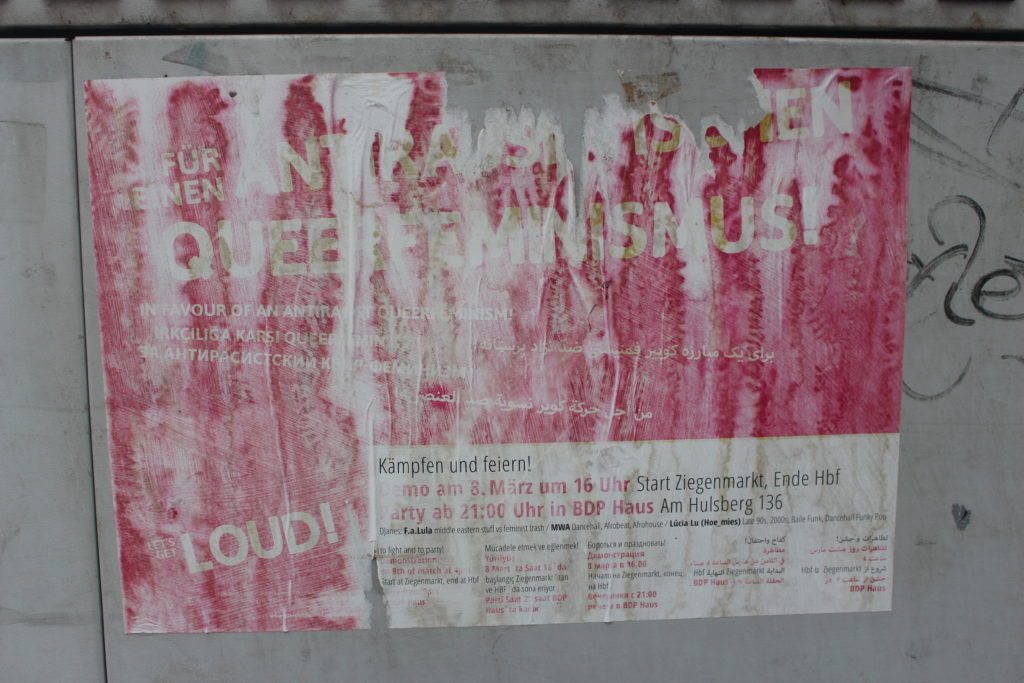
While your daily life continues, imagine that you are listening to each of these voices that suddenly rise from the streets as life flows. Can you imagine, as soon as you realize, there’s still no sound on the streets? While life is flowing, we can easily talk about the sticker on the wall, the street light, the cigarette machine, the posters that are in fact making the voices of people on any subject heard. The visual studies are still an important factor in the modern world, complementing the theory of social movement. It has been defended for many years. The role of visual trace carries huge importance for political communication. The visual studies bring together the role of media in political communication with methodological and conceptual tools (Doerr and Teune 2013).
These sounds rising from the streets are an invitation to participate in mass protests in democratic regimes. It is effective on administrations and governments and the methods of oppression carried out onto society. The purpose of this is to publicize each person’s voice for the public to see and show a more effective stance against the administration. This is a way of direct expression and influence. However, a small matter to be addressed the fact that a person sympathizes with the cause of the movement or protest does not mean that he or she will be participating. It may create strong and weak collation with the movement organizations of formal and informal networks. Moreover, communication channel is an important mobilization tool at this stage. An example of inactive mobilization of “visual traces” is that if we divide the protest channels into active and deactive channels. These tracks in Gröpelingen are invitations of people who want to make their voices freely heard. Is justice and human rights a make-up that is used to ensure the legitimacy of the state?
These photographs were taken by Ogeday Tekin.
References:
- Doerr, Nicole, Alice Mattoni, and Simon Teune, eds. 2013. Advances in the Visual Analysis of Social Movements. Bradford: Emerald Group Pub.
